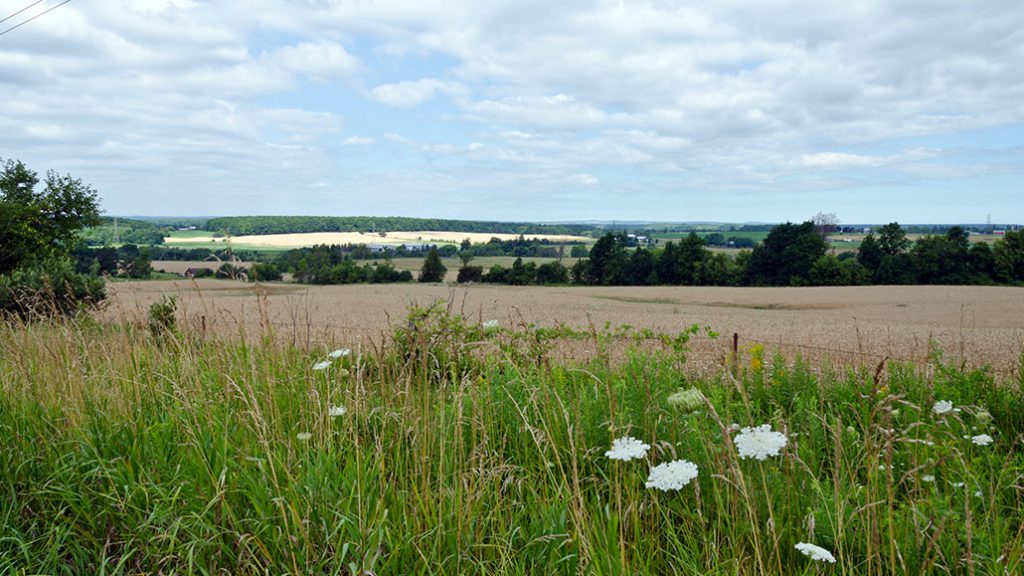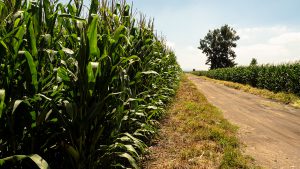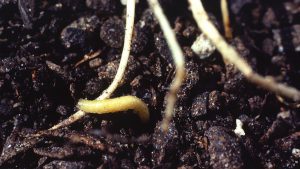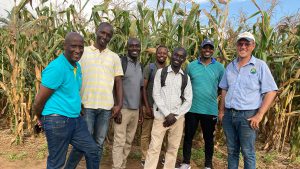Agriculture in the North
ONGOING RESEARCH

THE NORTHERN ONTARIO Farm Innovation Alliance (NOFIA) is based out of New Liskeard and aims to develop strategies and partnerships to ensure the advancement of agricultural research and innovation in northern Ontario.
NOFIA held a virtual Northern Ontario Producer Research Day to highlight some of the work being done in the region.
BARRIERS
“Overcoming Agricultural Barriers in Northern Ontario: Demystifying the North Through Education, Promotion & Engagement” is a joint project between the University of Guelph and Hearst University. Dr. Sara Epp, an assistant professor in the School of Environmental Design and Rural Development at the University of Guelph, says her research has identified three barriers to farming in the north: economics, social, and environmental.
Economics. Farmers are typically driven by profits, and the distance from markets and inputs can have an economic impact. Increased trucking time is one example of this; the closest delivery point for grain may be in Manitoba, depending on the location of the farm within the Northern Clay Belt. If doing direct shipping, the access to markets can be quite limited. Economic barriers are a concern, however, the good news is that the capacity in the north is increasing and expanding, so the economic barrier in the future is expected to shrink.
Social. During Epp’s research, a wide demographic of farmers from across Ontario were surveyed about their feelings on the social barriers of farming. Several common concerns were identified which resonate with people in the north — there is a sense of isolation, a sense of not many employment opportunities outside of the farm, and concerns over access to services for children and their families.
Environmental. There is a general acknowledgement by northern farmers that the climate, soil, weather, and crop diversity is not the same as in southern Ontario and this creates more challenges and barriers. However, changing climate conditions, new technologies, and advancements in crop genetics are opening up new opportunities for growth in the north.
Epp says her research revealed five common myths about northern farming: it is always cold; nothing grows; everyone speaks French; there aren’t many youth; and the north is very isolating.
The Guelph/Hearst group has built toolkits to help support, enhance understanding, and overcome barriers by showcasing the uniqueness of the north. Workshops and webinars will be held in the future. For more information visit Northernontag.com
SOIL CARBON
Dr. Claudia Wagner-Riddle, a professor in the School of Environmental Sciences at the University of Guelph, is working on research “Assessing the Impact of Pasture/Forage Management on Soil Organic Carbon (SOC) and Greenhouse Gas (GHG) Emissions in the Northern Ontario Great Clay Belt”.
“Most agriculture soils are losing carbon rather than gaining due to more annual crops, a drop in pasture, more tillage, and fewer livestock farms. Soil organic matter loss affects soil fertility,” says Wagner-Riddle.
Her project obtained baseline soil carbon for different land uses, assessed the impact of agriculture on soil carbon stocks, and assessed the impact of management on soil carbon stocks. Essentially, she wanted to understand what happens to the soil organic carbon when forested land is moved to annual crops or pasture.
What has been documented through this research is that a higher organic carbon concentration is found under pasture and forest compared to arable cropping. The soil bulk density is generally higher under arable cropping (more soil in an area) than under forest and pasture.
LAND USE CONVERSION
Dr. Baoxin Hu, a professor of geomatics engineering within the Department of Earth and Space Science and Engineering at York University, is studying “Integrating Advanced Remote Sensing Technologies and Multi-Scale Modelling to Advance the Understanding of the Impact of Land Conversion on Soil Properties”.
Climate change is predicted to have a negative affect on some crop production due to more irregular and extreme conditions, although this will also create a northward shift of warmer climates, which could be promising for northern Ontario agriculture.
“A northward shift of the agricultural climate zone in the 21st century will see an increased land use conversion in northern Ontario, this will change soil properties, although it is unclear how the changes will vary the land use status’ and soil properties and subsequent land uses,” says Hu.
Hu has three main goals for her project: digital soil mapping, classification of forest cover types, and the development of a decision support system (with agriculture potential) along the Highway 11 corridor.
MORE RESEARCH
University of Guelph master’s students Celina Trang and Zexia Li are looking at “Land Conversion Impacts on Soil and Water Dynamics in the Highway 11 Corridor”. Agriculture is expanding in northern Ontario as a result of the changing climate and affordable land prices. They aim to provide baseline data for soil and groundwater dynamics and the impact of soil conversion from forest to arable land.
Dr. Insaf Chida from the University of Quebec is looking at the “Establishment of Intercropping Legumes in Organic Annual Crops and Impact on Weed Control”.
It has been shown that intercropping has several benefits for soil and crops. She is studying the impact of different intercropping species in cereal production on weed communities. Four treatments are being studied in organic oats: the control, then crimson clover, white clover, and sweet clover individually intercropped with oats. Chida has identified that the choice of species is very important and the management of the species is crucial.
Frédérique Lavallée of the University of Quebec is studying “Agroforestry and Intensive Grazing for Maximizing Carbon Stocks Within the Cattle Industry”.
Climate change predictions expect fewer frost days, longer growing seasons, an increase in high temperature events, a change in precipitation patterns, moisture deficit, drier summers, and increased winter and spring precipitation.
“In Canada, agriculture is responsible for 8.1 per cent of GHG emissions. But farming is also a great source of mitigating climate change,” says Lavallée.
Researchers and farmers are developing innovative agronomic practices that can help offset the GHGs that are created. Lavallée is looking at trees and pasture in a single system, and so far, it looks to be very promising for climate change and storing carbon.
Northern Ontario is at the forefront of change and research in agriculture. It is in a unique situation featuring many acres that have never been cultivated. A lot can be learned from this amazing area and it has a vast potential for growth. •

























